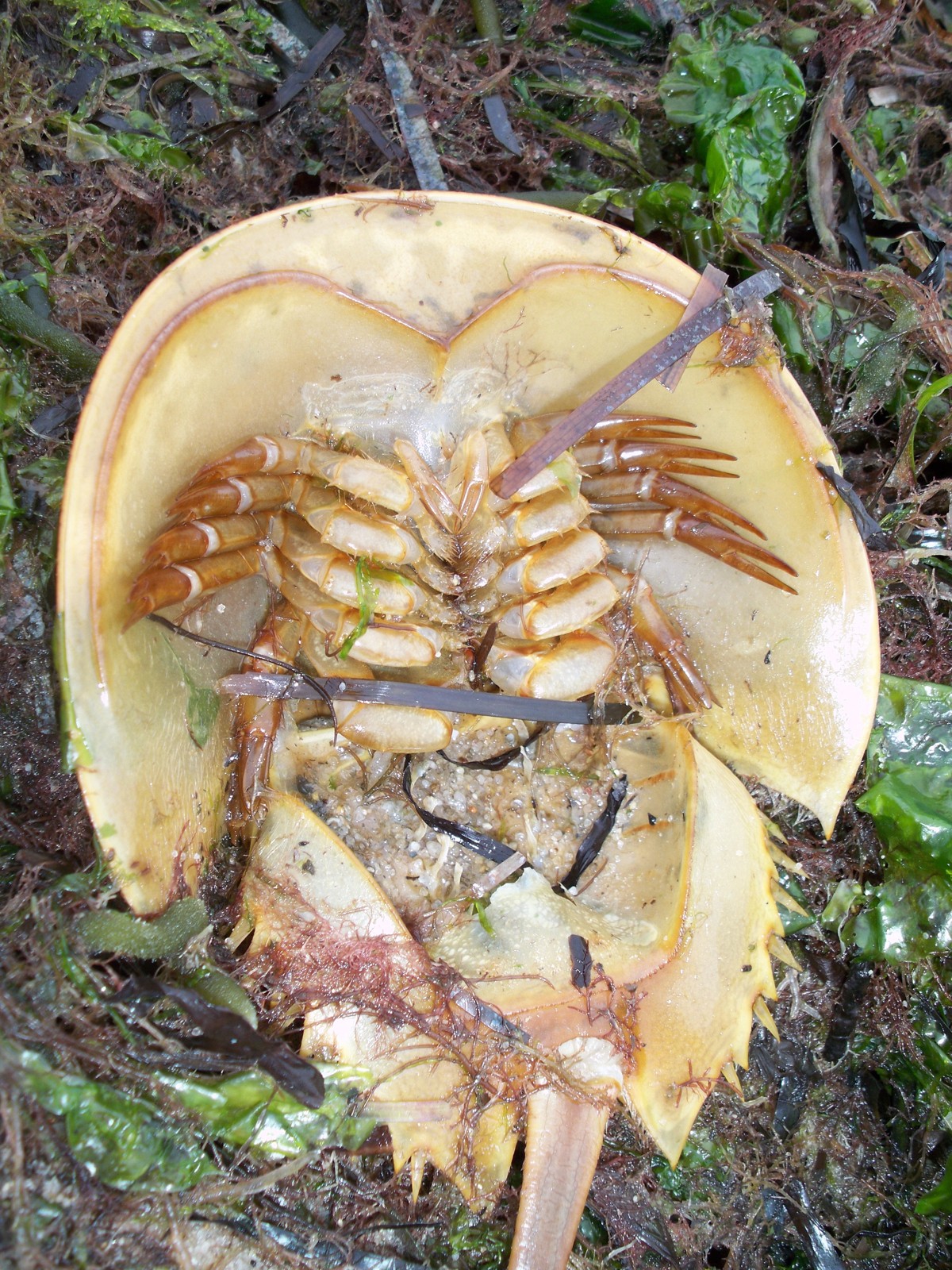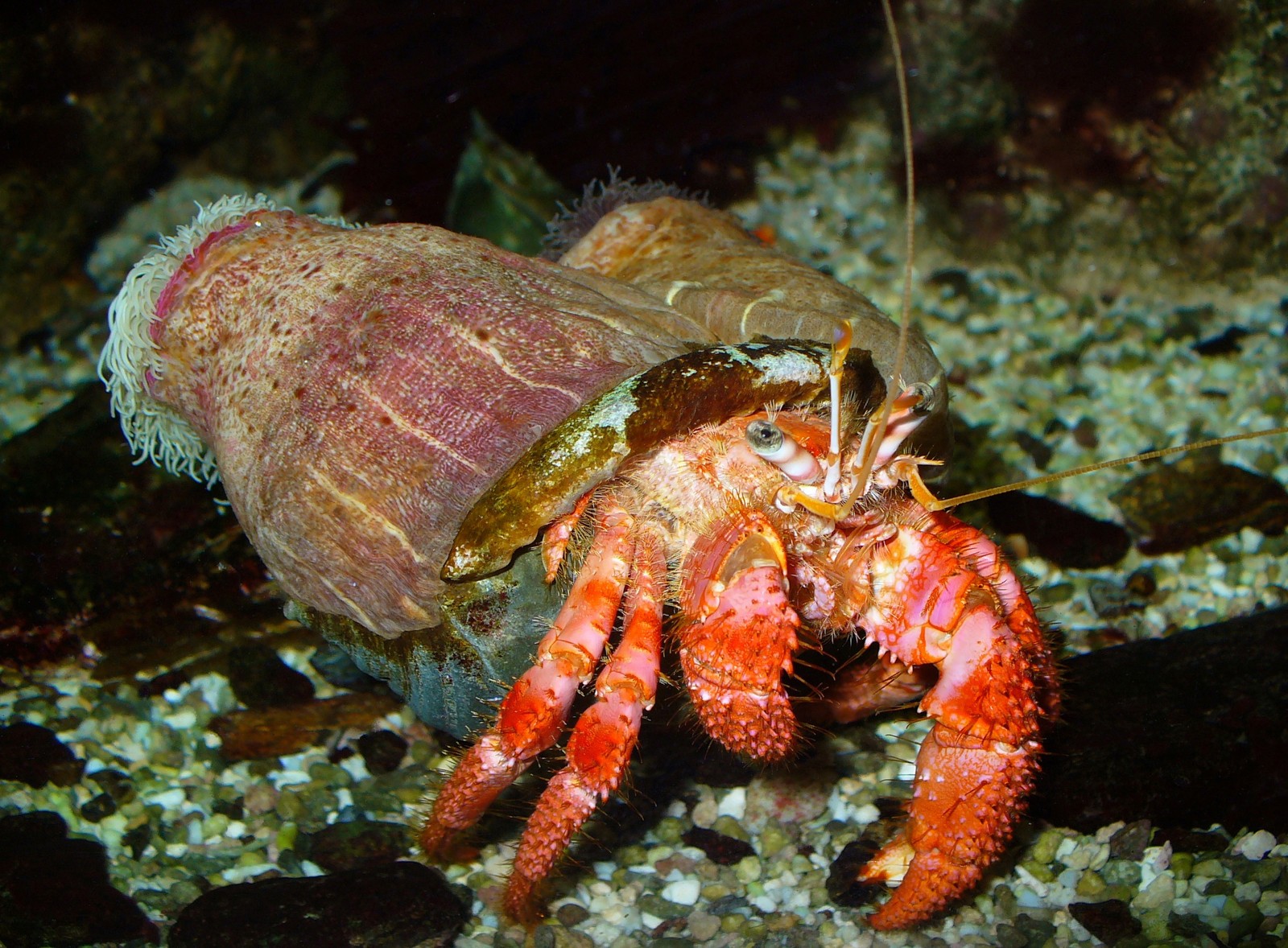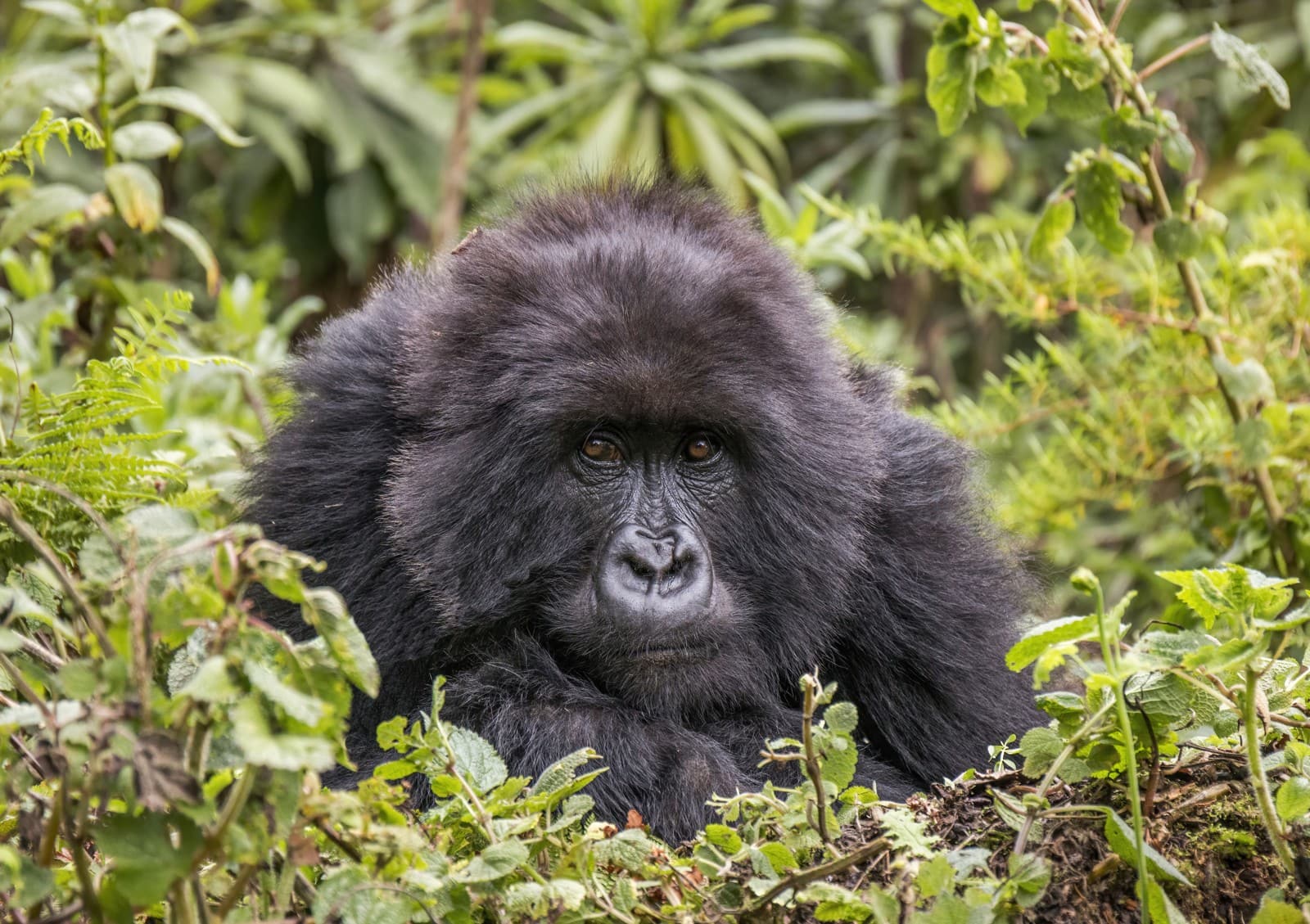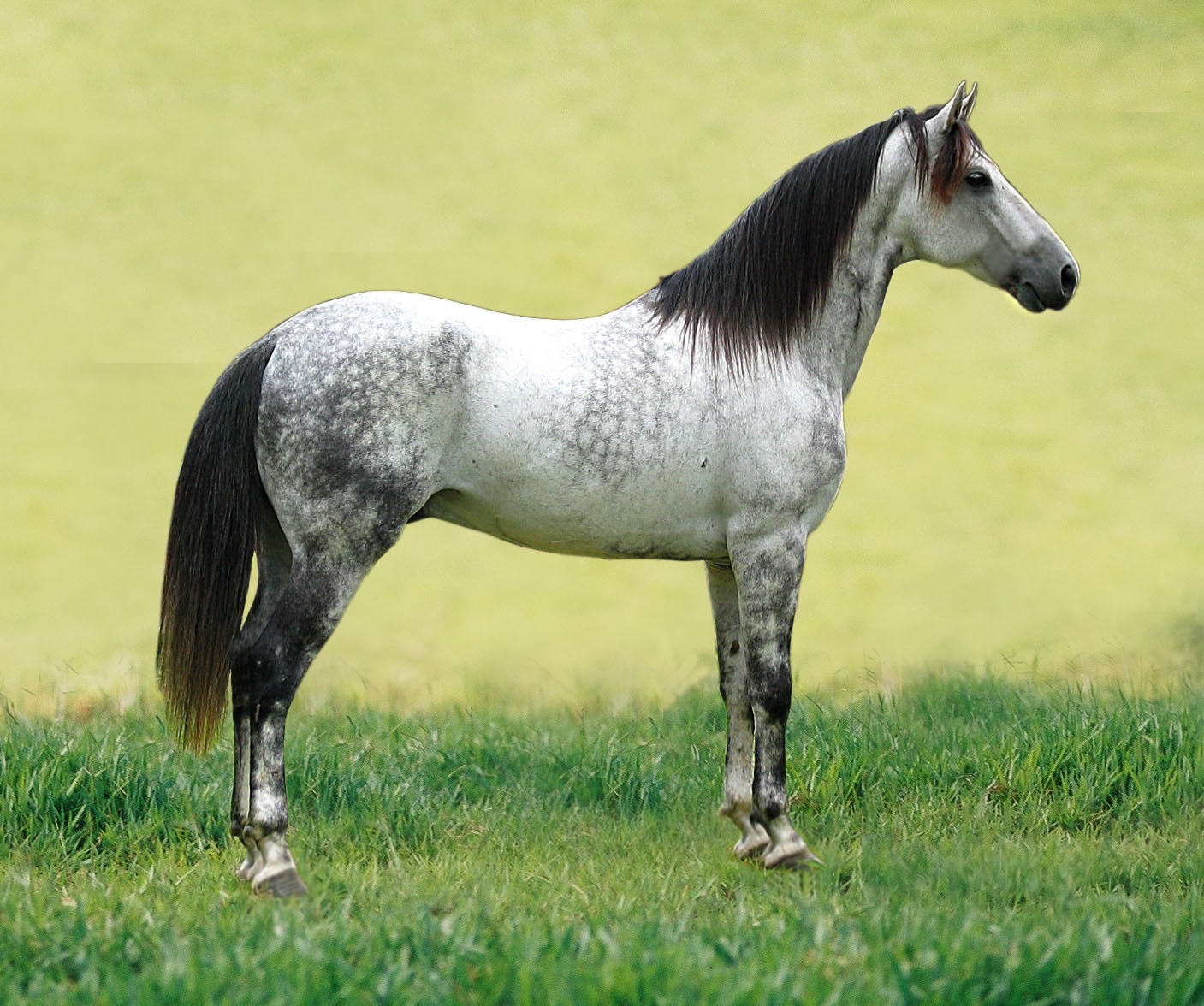Hermit Crab vs Coconut Crab: A Complete Comparison
While Hermit Crabs and Coconut Crabs share ancestral roots, these fascinating crustaceans couldn’t be more different in their adult forms. The most striking contrast in this Hermit Crab vs Coconut Crab comparison lies in their size: Hermit Crabs typically measure just 0.5-4 inches (1.3-10 cm), while the mighty Coconut Crab can reach leg spans of up to 3 feet (1 meter), making it the largest terrestrial arthropod in the world.
Despite their common ancestry, these creatures have evolved distinct survival strategies. Hermit Crabs rely on borrowed shells for protection throughout their lives, while Coconut Crabs develop their own hardened exoskeletons and abandon shells in adulthood. This fundamental difference shapes everything from their habitat preferences to hunting behaviors.
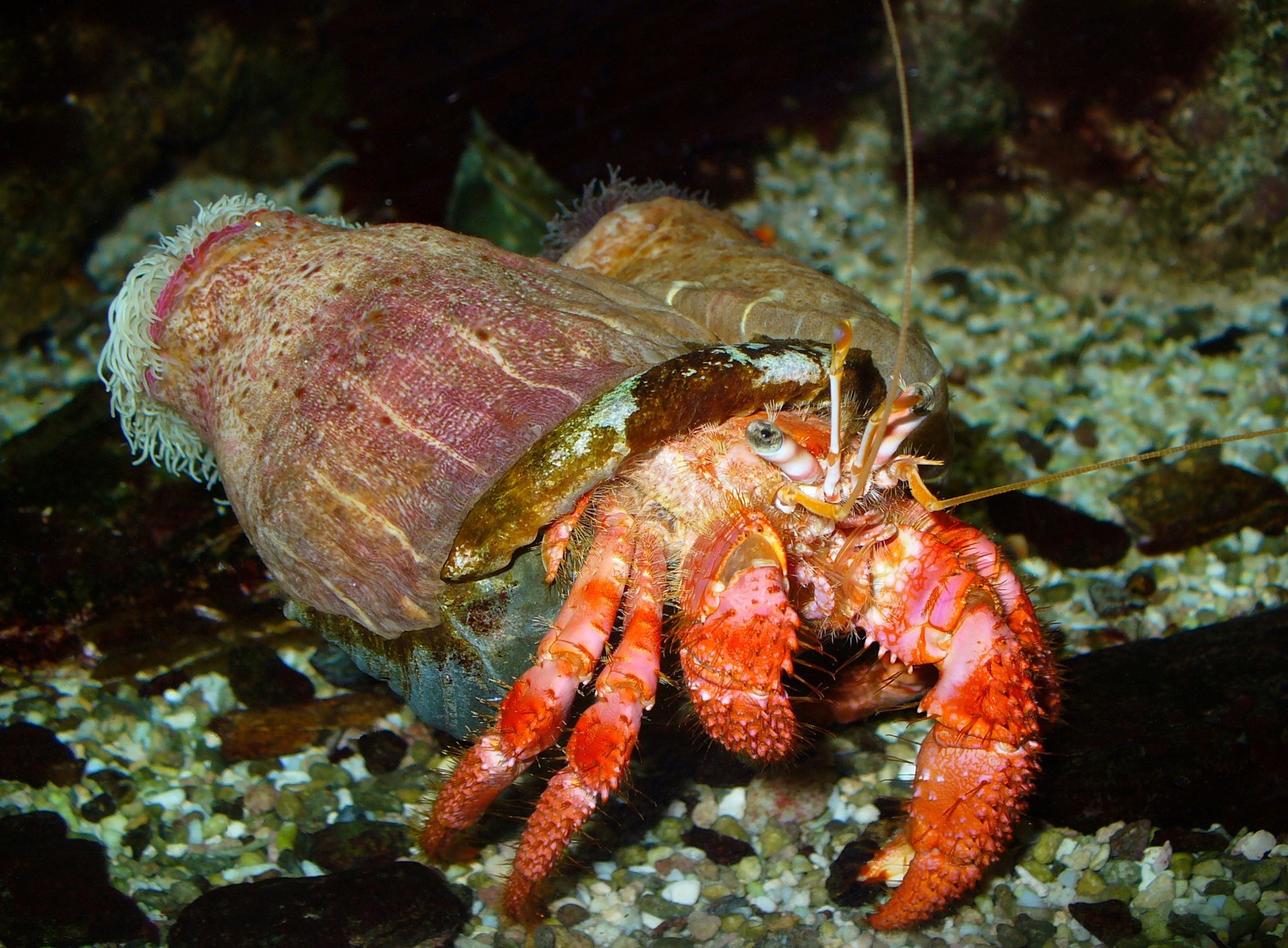
© H. Zell / CC BY-SA 3.0
The Hermit Crab exemplifies evolutionary ingenuity with its shell-borrowing behavior, which provides crucial protection against predators and environmental stressors. These adaptable creatures can be found in various marine environments, from tropical shores to deeper waters.
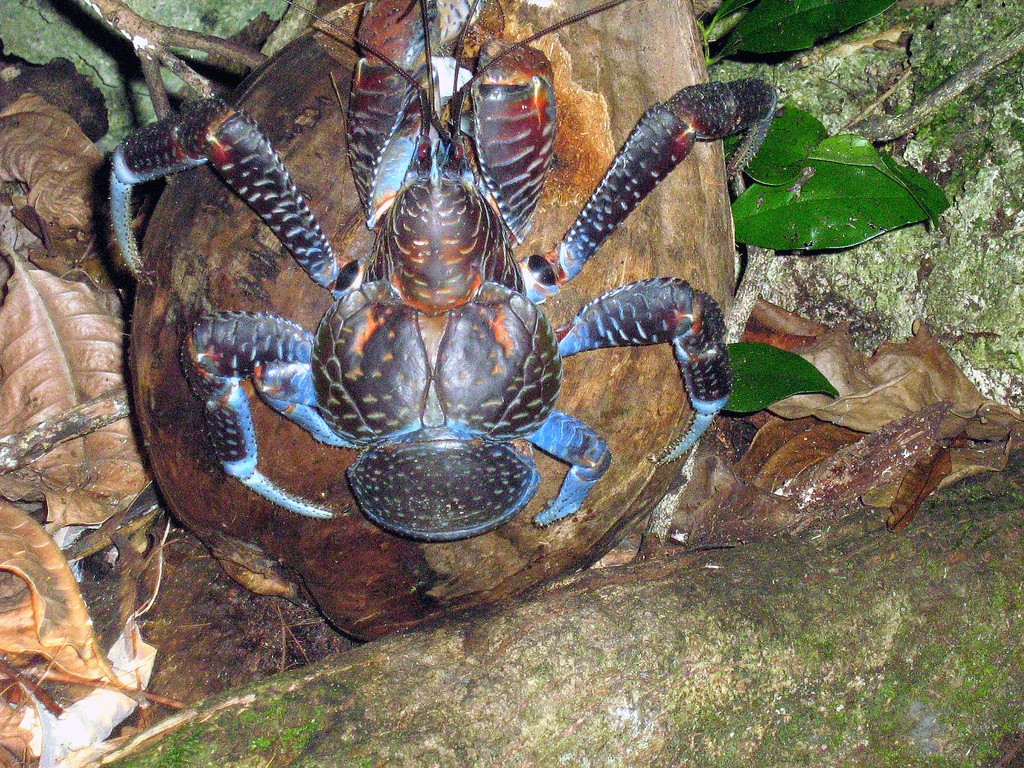
© fearlessRich / CC BY 2.0
The imposing Coconut Crab demonstrates the remarkable potential for terrestrial adaptation among crustaceans. Its powerful claws can exert up to 3,300 newtons of force, enabling it to crack open coconuts and other hard foods that most arthropods couldn’t dream of accessing.
Key Differences Between Hermit Crabs and Coconut Crabs
| Feature | Hermit Crab | Coconut Crab |
|---|---|---|
| Size | 0.5-4 inches (1.3-10 cm) | Up to 3 feet (1 m) leg span |
| Weight | 0.1-1.1 oz (3-30 g) | Up to 9 lbs (4.1 kg) |
| Shell Use | Lifelong dependency | Only as juveniles |
| Habitat | Marine and semi-terrestrial | Fully terrestrial as adults |
| Diet | Omnivorous scavenger | Primarily coconuts and fruits |
| Lifespan | 5-15 years | 30-60 years |
Habitat and Distribution
Hermit Crabs occupy diverse environments across the globe’s tropical and subtropical regions, primarily in marine and intertidal zones. While some species venture onto land, they maintain close proximity to water sources. In contrast, adult Coconut Crabs have evolved to be entirely terrestrial, inhabiting tropical islands in the Indo-Pacific region. They only return to the ocean to release their eggs, maintaining their species’ connection to their marine origins.
Physical Capabilities and Strength
The strength difference between these crustaceans is remarkable. While Hermit Crabs possess relatively modest claws adapted for scavenging and defense, Coconut Crabs boast the strongest grip of any arthropod. Their claws generate enough force to lift objects weighing up to 66 pounds (30 kg) - equivalent to the weight of a small child.
Behavioral Differences and Intelligence
Social Structure
Hermit Crabs often form social groups, participating in shell exchange chains and showing complex social behaviors. Coconut Crabs, however, are primarily solitary, only gathering in numbers during breeding season.
Problem-Solving Abilities
Both species demonstrate remarkable intelligence for invertebrates. Hermit Crabs show sophisticated shell selection abilities, while Coconut Crabs exhibit complex tool use in accessing food sources.
Who Would Win in a Confrontation?
While this question frequently appears in searches, it’s important to note that these species rarely interact in nature. However, considering the vast size difference and the Coconut Crab’s superior strength, any theoretical confrontation would heavily favor the larger crustacean. The Coconut Crab’s powerful claws and robust exoskeleton would provide an insurmountable advantage over even the largest Hermit Crab.
Conservation Status and Threats
Both species face increasing challenges from human activity:
-
Hermit Crabs contend with:
- Ocean pollution
- Shell availability reduction
- Habitat destruction
- Climate change impacts
-
Coconut Crabs face:
- Hunting pressure
- Habitat loss
- Limited distribution range
- Human development impacts
Understanding these remarkable creatures’ differences and challenges is crucial for their conservation. While they may have diverged dramatically in their evolution, both species represent fascinating examples of crustacean adaptation and deserve our attention and protection efforts.
